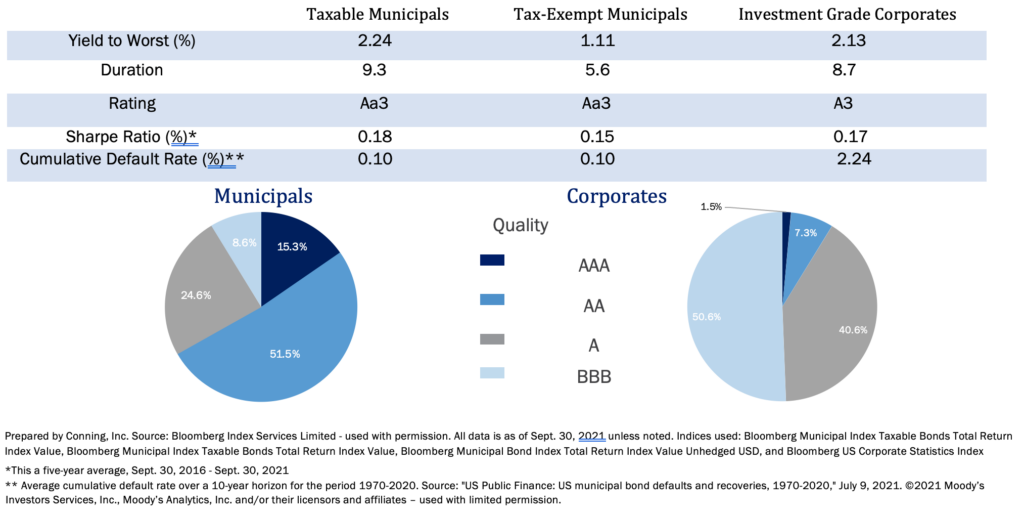Nothing is stitched together like a baseball.
A baseball uses only two pieces of leather, each cut in an hourglass pattern and sewn in such a manner that there is a continuous line of nestled Vs, like the birds you might have drawn as a kid. The stitches are raised, allowing pitchers to vary the spin on the ball, which affects the trajectory and better enables strikes. In this way, every stitch has a small impact on the outcome of the game.
Today we’re discussing insurers and the ways that they can grow business by providing the next-generation agent experience. This experience will incorporate agents and customers in a digital process. Can insurers cut two pieces of experience that align and fit together, then bind them with technology that will give them strength and allow them to work together as one, cohesive distribution tool? Can they use all of their resources to put their creation into action, pulling together a digital dream team that’s built to compete?
Majesco has been focusing on how insurers can Build a Field of Insurance Dreams by using next-gen technologies to prepare themselves to compete. Some insurers are making their strategies come to life by stacking in cloud-native computing, microservices, API-ready connections, data and automation. Insurers must be very thoughtful in how they pull together the best of the best to achieve optimal results.
In September, Celent expanded our study of the agent/insurer relationship with the release of a Majesco-commissioned report, Reshaping the Distributor Insurer Relationship: A Survey of Independent Insurance Agents. I then discussed the findings with Karlyn Carnahan, head of P&C insurance, Celent, and Brad Denning, principal at PwC who leads their distribution management practice, in a fascinating webinar, Seismographic and Technology Shifts Reshape the Distributor-Carrier Relationship. Our conversation was instructive for any insurer that uses agents as a part of distribution, because it covered not only what is needed to foster the best relationships but discussed the overall philosophy and strategy for forging valuable tech solutions. Below are excerpts. We started with Karlyn’s overview of the Celent report.
A field in the midst of change
Demographic pressure, customer experience pressure, ease-of-business issues and digital technologies are sweeping through the industry and shaking up the distributor-insurer relationship.
Karlyn Carnahan
“Agents are going through a lot of changes that they are trying to deal with just as insurance carriers are. The shifting customer expectations that carriers are facing are also impacting insurance agents. Customers expect to be able to interact 24 hours a day, and independent agents don't typically work 24 hours a day, so they're trying to figure out how to create their own digital transformation in order to manage these customer expectations. Most agents aren't equipped to do that.”
And there are changes within the agencies themselves. Partners are retiring. Mergers are more frequent. Insurers need to educate new agents quickly at the same time they are helping them to put together relevant offerings.
Of course, the insurer has its own goals. They are looking at this generation of customers and knowing that digital service must be broad and, in many ways, automated to achieve the speed customers want as they gather information or transact business.
See also: Future of Digital Insurance Claims
Did the path to digitalization end with agent portals?
Denise Garth
Digitalization is a wide-open topic, and there are a lot of definitions relative to distribution. How do you define it? Why is it more than just agent portals? Why does a digital initiative need to accomplish improvements for both the front and the back office?
Brad Denning
“When we first started down this path, [digitalization] was focused on efficiencies and taking costs out of the system. Insurers were trying to automate and bring efficiencies to all of the manual processes and the movement of paper. Once that was accomplished, it seemed as though everyone just moved toward an agency portal type of solution. People thought, 'If we’ve put everything on the portal, we've digitized everything.'
“But sometimes we see challenges when carriers don't necessarily take into account what digital transformation really means for their agencies and their producers — thinking about their distribution force as true customers. You have to take that customer-centric view of what it means to be digital. And if you don't look at both the front and back office, you're going to be neglecting an important part of the value chain.
“There is a wide variety of distributor expectations, and, certainly as they move forward, that has to be keenly monitored by carriers so that they are meeting and exceeding expectations to maintain those strong relationships with key producers, attracting new producers as each generation continues.”
Agent to Carrier — “Know me. Know my business.”
If you’re wanting to create a distribution dream team, you want to give the agents with the skills the best tools to help them do what they do best. Interacting with agents requires knowing agents — not just knowing a little bit about the agent mindset, but deeply understanding agents and the way in which they work to get their jobs done; otherwise, digital work is wasted. The agent perspective provides competitive knowledge.
Denise Garth
“Let’s look at the agency perspective, rather than the operations perspective and expand on the outside-in view.”
Karlyn Carnahan
“The challenge that insurance companies have is that we've been thinking about the customer experience, but from an internal perspective. We think very transactionally around our own workflow. How do I process a payment or make a claim? It's important to streamline, eliminate friction and automate where possible, but that is driven around our own workflow. That's not necessarily how an agent or policyholder thinks about the customer experience.
“From an agent's perspective, it's much broader than the pure transaction. The agent is thinking, 'Know me and recognize the value I have and help me protect my clients and help me service my clients. Contractually speaking, they are my clients, not yours, so don’t disintermediate me and don’t get in the way.'”
Not knowing the agent — an example
Knowing the agent may sound simple, but, in reality, understanding must go beyond surface workflow into the deeper motivations and activities. The problem with minimal understanding is that an insurer will inadvertently create great capabilities that may never be used because they aren’t built using the agent perspective.
Karlyn Carnahan
“I was interviewing a CSR, and she was talking about a particular carrier. She said, 'I could request my endorsements online. They've enabled it. It's faster. It's easier. I could do it and get it over with, but I will never use their functionality,' and I said, 'Well, why not? That doesn't make sense.'
“She said, 'Because when I put in the information requesting the endorsement, I don't get confirmation. So, here's the use case: I put in my information. The underwriter takes a few days and between the time that they process it and I request it, there’s a loss,' she said. 'I have no proof that I asked for that endorsement. And that puts me in an E and O situation.'
That’s an incredibly thoughtful response that confirms the issue. Carrier digitalization of agency processes must include thorough research into actual agency usage and needs.
Are insurers aligning user experiences?
Brad Denning
“Up until recently, most carriers have looked at customer experience as the policyholder experience — and the producer experience as a completely different set of priorities and governing principles. This can leave the producer experience lacking. When you're not aligning your customer experience at the enterprise level to your strategy or to your producer, you find producers running into experiences that carriers would never put upon their policyholders. How do you interweave and collaborate so that those experiences are unified? Accounting for nuances is extremely important for carriers.”
Preparing for next season — how do insurers begin making distribution changes?
Brad walked us through a Distribution Management Maturity Model that accounted for five states of distribution inside an insurer. These ranged from “Current state chaos” to “Predictive analytics & AI.” I then asked Brad and Karlyn to help insurers envision moving through these states of distribution and what is involved. The idea isn’t to go from one to five overnight. The idea is to progress. How should insurers begin their journeys?
Brad Denning
“I would encourage insurers to first document pain points and use data to highlight the impact of those pain points on your organization.
- How many people are used to doing “X” process?
- How many different manual processes are used to satisfy a particular enterprise process?
- What's the spending associated with maintaining X, Y and Z?
“It’s not that difficult to come up with five to 10 metrics and measurements of that current state. And usually when you're in that state, the data is easy to find, and it's hard to refute. You then build the story of, 'Wouldn't it be better if we could do X, Y and Z?' Build a fact-based case to get alignment within the organization that there is a problem, but there is an opportunity for operational efficiency.”
See also: Underwriting in the Digital Age
Karlyn Carnahan
“Here is a relatively simple and easy thing to do. Start by sending a quick survey out to your agents, and say, 'Here are 12 items. How important are they to you?' Ask, 'How well are we doing these things?' You’ll see whether or not you're providing the agents with the things that are most important to them.
"Follow that question up with, 'If we were able to improve it, how likely is it that you would send more business to us?'
"Now you have your answers. You have both the internal piece, as Brad suggested — 'What is the cost of being inefficient?' Then you have the external piece — 'Where should we begin thinking about these inefficiencies to find that low-hanging fruit, and what kind of an impact would it make in terms of new business production?'”
"Some insurers will be sidelined at this point because they think, 'I can’t do this until I replace my core system.'
"That's not true. There are other options than replacing your core system. It might be a strategy to think about, but there are other things that you can do faster in order to deliver a better experience for your agent and provide the capabilities that they're looking for. Wrapping with a digital platform is a very realistic option to provide some great capabilities.”
Are you ready to play the game?
The Field of Insurance Dreams is filled with opportunities. Can we design and build the insurance experiences that are meaningful for customers and the agents who serve them? Transformation begins with understanding. Alignment is crucial. Technology can bring us efficiencies and satisfy user expectations. If it’s time to look at your distribution with an eye toward the future; don’t delay!
For the full set of distribution insights, be sure to download Reshaping the Distributor Insurer Relationship: A Survey of Independent Insurance Agents, or view the full conversation in to our Majesco webinar, Seismographic and Technology Shifts Reshape the Distributor-Carrier Relationship.





























